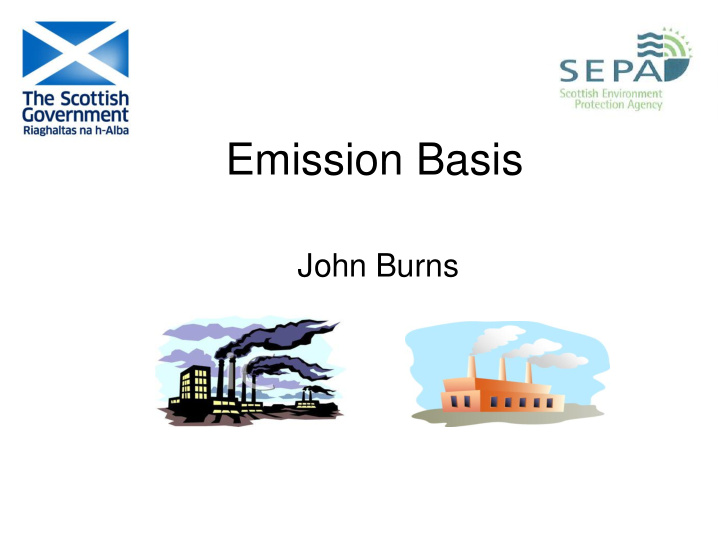



Emission Basis John Burns
3. Allocation 4. Compliance 1. Business 2. Rules for GIA 5. Site rules charge planning and charging charges Charge Site Emission Environ = factors Factors Factors
June Workshop Feedback Emissions ranked highly as being important or quite important Scored consistently in the middle of the range against most of the principles, Scored well on risk basis (2 nd to Environmental Impact) Concerns about complexity Considered applicable for larger emissions (data quality) Identified that potential for double charging (e.g. CO 2 emissions under ETS and CRC)
Proposal Use the EA’s emissions module as a basis What are givens: Will look at the amount and the “hazard potential” e.g. toxicity / BOD etc. Threshold value below which excluded Banded SubstanceUnits SubstanceUnits Emission Emission Longann Threshol Threshol et (NIC 6 Longannet ( d d 34) 5 Oxides of Tonnes 10 3772 4 Sulphur Year 3 2 1 Oxides of Tonnes 10 37716 0 Sulphur Year 0 50000 100000 150000 200000 250000
Example – Dry Cleaners Would not attract additional charges for emissions
Example – Medium Size Sewage Treatment Works Emissions charge would be based on water discharges only (if above threshold)
Example – Power Station Emissions charge potentially applied for: Air Water Discharge Water Abstraction Air emissions likely to be dominant
Key Questions Actual versus Permitted If Actual Emissions: What timeframe (previous 3 years - discuss)? Did consider plant capacity but considered that this is not helpful / relevant for many sites Banding versus Continuous Changes in Cost?
Key Question 1: Permitted vs Actual Pros Cons Limits tighten too far – Permitted Stable, defined, easily accessed, provides breaches, frequent variations, incentive to tighten old limits. No active review of limits. licence then potential blocks “spare” capacity to others. Actual Provides incentive to Uncertainty in measurements. Potential to consider if “I” can reduce actual emissions, remains afford it I can pollute. flexible
Banded Versus Continuous (Air) Proportional Log (Continuous) 4500 6 4000 5 3500 3000 4 2500 3 2000 1500 2 1000 1 500 0 0 0 50000 100000 150000 200000 250000 0 50000 100000 150000 200000 250000 Large Coal Fired Power Station Banded 6 5 4 3 2 1 0 0 50000 100000 150000 200000 250000
Key Question 2: Banding V Continuous Changes in Cost Pros Cons Banding Reflects there are Not responsive to changes, potentially large uncertainties in measurement, Continuous Reflects even small More IS/data management / positive changes, verification. Less Stable - variable between periods.
Recommend
More recommend